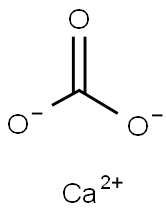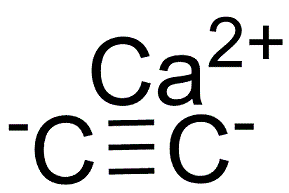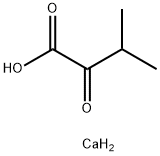CALCIUM HYDRIDE
Synonym(s):Calcium dihydride
- CAS NO.:7789-78-8
- Empirical Formula: CaH2
- Molecular Weight: 42.09
- MDL number: MFCD00010897
- EINECS: 232-189-2
- SAFETY DATA SHEET (SDS)
- Update Date: 2024-10-31 13:32:20

What is CALCIUM HYDRIDE?
Description
Calcium hydride is a gray powder (white if pure,
which is rare). It reacts vigorously with water liberating
H2 gas. CaH2 is thus used as a drying agent,
i.e. a desiccant. It is prepared directly from the metal
or by reacting CaCO3 with hydrogen at elevated temperatures. The overall reaction is shown as
follows:
CaCO3+heat+H2→CaH2+H2O+CO2
CaH2 is a saline hydride, meaning that its structure is
salt-like. The alkali metals and the alkaline earth metals
all form saline hydrides. These species are insoluble in
all solvents with which they do not react because they
have extended structures. CaH2 crystallizes in the
PbCl2 structural pattern.
The reaction of CaH2 with water can be represented
as follows:
CaH2+2H2O0Ca(OH)2+2H2
The two hydrolysis products, H2, a gas, and Ca(OH)2,
an aqueous mixture of solid plus liquid (i.e. a slurry), are readily separated from the solvent by distillation, filtration, or decantation.
Chemical properties
Pure calcium hydride crystallizes in the form of colorless, hexagonal prisms, but the industrial product contains some calcium metal and is consequently gray. On heating, calcium hydride decomposes without melting. In keeping with its salt-like character it is insoluble in inert solvents but dissolves in molten LiCl – KCl eutectic mixtures (352℃). Calcium hydride can be safely handled in air, but is slowly attacked and crumbles to powder if the air is moist. It reacts with dry oxygen or nitrogen if heated above 500℃, forming the oxide or nitride, respectively.
Physical properties
Grayish orthorhombic crystal or powder; stable at ambient temperature; density 1.70 g/cm3; melts at 816°C; reacts with water and alcohol.
The Uses of CALCIUM HYDRIDE
To prepare rare metals by reduction of their oxides; as a drying agent for liquids and gases; to generate hydrogen: 1 g of calcium hydride in water liberates 1 liter of hydrogen at STP; in organic syntheses.
The Uses of CALCIUM HYDRIDE
Calcium hydride is a relatively mild desiccant. It is safer than the more reactive agents such as sodium metal. Calcium hydride is widely used as a desiccant for basic solvents such as amines and pyridine in organic syntheses. It is also used to pre-dry solvents prior to the use of a more reactive desiccant. The compound has, however, been widely used for decades as a safe and convenient means to inflate weather balloons. Likewise, it is regularly used in laboratories to produce small quantities of highly pure hydrogen for experiments.
The Uses of CALCIUM HYDRIDE
Calcium hydride is used as an efficient drying agent for aprotic base-stable solvents like ethers and tertiary amines. It is a useful dehydrating agent in a synthesis of aldehyde enamines in high yield and purity.
What are the applications of Application
Calcium hydride is a drying agent
Preparation
Calcium hydride may be prepared from its elements by direct combination of calcium and hydrogen at 300 to 400°C. It also can be made by heating calcium chloride with hydrogen in the presence of sodium metal:
CaCl2 + H2 + 2Na → CaH2 + NaCl
Alternatively, calcium hydride may be prepared by the reduction of calcium oxide with magnesium in the presence of hydrogen:
CaO + Mg + H2 → CaH2 + MgO.
Production Methods
Calcium hydride ignites in air on heating and can explode violently if mixed and rubbed with a strong oxidizing agent such as perchlorate or bromate. Contact with water produces hydrogen which can create a fire hazard in a confined space.
Reactions
Once
ignited, it burns with a strongly exothermic reaction:
CaH2+O2→CaO+H2O
The reaction of calcium hydride with water is
also very exothermic. Heating is necessary to
initiate the reaction with alcohols to form alcoholates. The reaction with ammonia takes place
at 700 ℃ with formation of calcium amide. At
high temperature (600 – 1000℃) calcium
hydride is a powerful reducing agent.
General Description
Grayish-colored lump or crystalline solid. Irritating to skin and eyes. Used to make other chemicals.
Air & Water Reactions
Ignites in air or reacts violently, sometimes explosively, with air of high humidity [Bretherick 1979 p. 107]. Reacts exothermically with water to generate flammable hydrogen gas and calcium hydroxide, a base. [Merck, 11th ed. 1989].
Reactivity Profile
When silver fluoride is ground with CALCIUM HYDRIDE the mass becomes incandescent [Mellor 3:389 1946-47]. Heating the hydride strongly with chlorine, bromine, or iodine leads to incandescence. Mixtures of the hydride with various bromates, i.e. barium bromate; chlorates, i.e. barium chlorate, and perchlorates, i.e. potassium perchlorate; explode on grinding, [Mellor, 1946, vol. 3, 651]. CaH2 reacts incandescently with AgF if subject to friction. (Mellor, 1941, Vol. 3, 389, 651).
Hazard
Evolves highly flammable hydrogen when wet; solid product is slaked lime. Irritating to skin.
Health Hazard
Inhalation or contact with vapors, substance or decomposition products may cause severe injury or death. May produce corrosive solutions on contact with water. Fire will produce irritating, corrosive and/or toxic gases. Runoff from fire control may cause pollution.
Fire Hazard
Produce flammable gases on contact with water. May ignite on contact with water or moist air. Some react vigorously or explosively on contact with water. May be ignited by heat, sparks or flames. May re-ignite after fire is extinguished. Some are transported in highly flammable liquids. Runoff may create fire or explosion hazard.
Flammability and Explosibility
Not classified
Potential Exposure
Calcium hydride is used as a dryingand reducing agent and a cleaner for blocked up oil wells.
First aid
If this chemical gets into the eyes, remove anycontact lenses at once and irrigate immediately for atleast 30 min, occasionally lifting upper and lower lids. Seekmedical attention immediately. If this chemical contacts theskin, remove contaminated clothing and wash immediatelywith soap and water. Seek medical attention immediately. Ifthis chemical has been inhaled, remove from exposure, beginrescue breathing (using universal precautions, includingresuscitation mask) if breathing has stopped and CPR if heartaction has stopped. Transfer promptly to a medical facility.When this chemical has been swallowed, get medical attention. Give large quantities of water and induce vomiting. Donot make an unconscious person vomit. Medical observationis recommended for 24-48 h after breathing overexposure,as pulmonary edema may be delayed. As first aid for pulmonary edema, a doctor or authorized paramedic may consideradministering a corticosteroid spray.
storage
Color Code—Red Stripe: Flammability Hazard:Do not store in the same area as other flammable materials.Calcium hydride must be stored to avoid contact with wateror steam since violent reactions occur and flammablehydrogen gas is produced. Store in tightly closed containersin a cool, well-ventilated area.
Shipping
Calcium hydride should carry a “DANGEROUSWHEN WET” label. It falls in Hazard Class 4.3 andPacking Group I.
Incompatibilities
Reacts with water, moist air, and steam,releasing flammable hydrogen gas and may self-ignite inair. Incompatible with metal halogenates, silver fluoride,and tetrahydrofuran.
Properties of CALCIUM HYDRIDE
| Melting point: | 816 °C (lit.) |
| Density | 1.9 |
| storage temp. | Store below +30°C. |
| solubility | reacts with H2O, ethanol |
| form | powder |
| Specific Gravity | 1.9 |
| color | Light gray |
| Water Solubility | Soluble in water and alcohol. Insoluble in benzene. |
| Sensitive | Moisture Sensitive |
| Merck | 14,1672 |
| Stability: | Stable, but reacts violently with water, liberating and igniting hydrogen. Contact with strong oxidizers may cause fire or explosion. Incompatible with strong oxidizing agents, strong acids, halogens, water, alcohols. |
| CAS DataBase Reference | 7789-78-8(CAS DataBase Reference) |
| NIST Chemistry Reference | calcium hydride(7789-78-8) |
| EPA Substance Registry System | Calcium hydride (CaH2) (7789-78-8) |
Safety information for CALCIUM HYDRIDE
| Signal word | Danger |
| Pictogram(s) |
 Flame Flammables GHS02  Exclamation Mark Irritant GHS07 |
| GHS Hazard Statements |
H260:Substances And Mixtures Which, In Contact With Water,Emit Flammable Gases H315:Skin corrosion/irritation H319:Serious eye damage/eye irritation |
| Precautionary Statement Codes |
P223:Keep away from any possible contact with water, because of violent reaction and possible flash fire. P264:Wash hands thoroughly after handling. P264:Wash skin thouroughly after handling. P280:Wear protective gloves/protective clothing/eye protection/face protection. P231+P232:Handle under inert gas. Protect from moisture. P302+P352:IF ON SKIN: wash with plenty of soap and water. P305+P351+P338:IF IN EYES: Rinse cautiously with water for several minutes. Remove contact lenses, if present and easy to do. Continuerinsing. |
Computed Descriptors for CALCIUM HYDRIDE
| InChIKey | FAQLAUHZSGTTLN-UHFFFAOYSA-N |
Abamectin manufacturer
JSK Chemicals
New Products
4-Aminotetrahydropyran-4-carbonitrile Hydrochloride (R)-3-Aminobutanenitrile Hydrochloride 4-AMINO-TETRAHYDRO-PYRAN-4-CARBOXYLIC ACID HCL 4-(Dimethylamino)tetrahydro-2H-pyran-4-carbonitrile 3-((Dimethylamino)methyl)-5-methylhexan-2-one oxalate 1,4-Dioxa-8-azaspiro[4.5]decane 5-Bromo-2-nitropyridine Nimesulide BP Aceclofenac IP/BP/EP Diclofenac Sodium IP/BP/EP/USP Mefenamic Acid IP/BP/EP/USP Ornidazole IP Diclofenac Potassium SODIUM AAS SOLUTION ZINC AAS SOLUTION BUFFER SOLUTION PH 10.0(BORATE) GOOCH CRUCIBLE SINTERED AQUANIL 5 BERYLLIUM AAS SOLUTION 2-Bromo-1-(bromomethyl)-3-chloro-5-nitrobenzene 2-Bromo-3-nitroaniline N-(3-Hydroxypropyl)-N-methylacetamide 3-Bromo-6-chloropyridazine 4-ethyl-3-nitrobenzoic acidRelated products of tetrahydrofuran








You may like
-
 Calcium hydride CAS 7789-78-8View Details
Calcium hydride CAS 7789-78-8View Details
7789-78-8 -
 Calcium hydride CAS 7789-78-8View Details
Calcium hydride CAS 7789-78-8View Details
7789-78-8 -
 Calcium hydride CAS 7789-78-8View Details
Calcium hydride CAS 7789-78-8View Details
7789-78-8 -
 Calcium hydride CAS 7789-78-8View Details
Calcium hydride CAS 7789-78-8View Details
7789-78-8 -
 Calcium hydride, Mg <1% CAS 7789-78-8View Details
Calcium hydride, Mg <1% CAS 7789-78-8View Details
7789-78-8 -
 Calcium hydride, Mg <1% CAS 7789-78-8View Details
Calcium hydride, Mg <1% CAS 7789-78-8View Details
7789-78-8 -
 Calcium hydride CAS 7789-78-8View Details
Calcium hydride CAS 7789-78-8View Details
7789-78-8 -
 Calcium hydride 95% CAS 7789-78-8View Details
Calcium hydride 95% CAS 7789-78-8View Details
7789-78-8